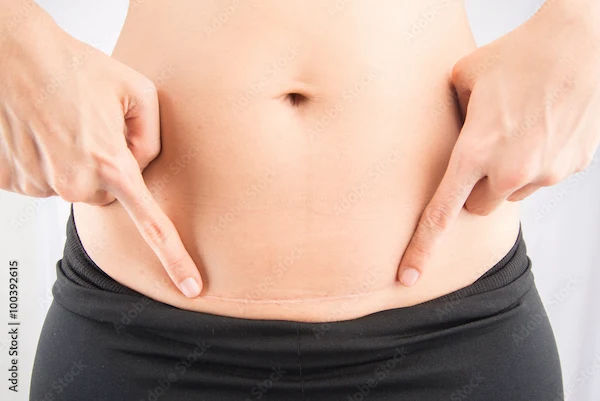How to Reduce Postpartum Belly?
Learn safe and effective ways to reduce postpartum belly fat after childbirth. Discover diet tips, gentle exercises, and recovery strategies to regain your strength and confidence.

Written by Dr. Sonia Bhatt
Last updated on 3rd Jul, 2025

Introduction
After childbirth, your body goes through many changes. One of the most common concerns for new moms is how to reduce the postpartum belly. It’s completely normal to have a softer, rounder tummy after delivery, and with time, patience, and the right approach, you can gradually regain your pre-pregnancy shape.
This article will guide you through safe and effective ways to reduce postpartum belly fat while keeping your health and recovery as the top priority.
Understanding the Postpartum Belly
During pregnancy, your uterus expands to accommodate your growing baby, and your abdominal muscles stretch. After delivery, it takes time for your uterus to shrink back to its normal size, called involution, and your skin and muscles need time to regain strength.
Factors that contribute to a lingering postpartum belly include:
Uterus Shrinking: It takes about 6-8 weeks for the uterus to return to its pre-pregnancy size.
Stretched Abdominal Muscles (Diastasis Recti): Some women experience a separation of the abdominal muscles, which may require special exercises to heal.
Extra Fat Stores: Your body naturally stores fat during pregnancy to support breastfeeding and recovery.
Fluid Retention: Hormonal changes can cause temporary bloating.
Remember, every woman’s body recovers differently, so be kind to yourself and give it time.
Consult Top Specialists for Personalised Care
Safe Ways to Reduce Postpartum Belly
Below are key methods that can help reduce a postpartum belly safely and effectively.
1. Start with Gentle Movement (After Doctor’s Approval)
Start reintroducing physical activity carefully.
Walking is one of the best ways to ease back into physical activity. Start with short, slow walks and gradually increase.
Avoid intense workouts, like crunches, too soon, especially if you have had a C-section or diastasis recti.
2. Postpartum Exercises to Strengthen Core
Once your doctor clears you (usually 6 weeks postpartum for vaginal birth, 8-12 weeks for C-section), try these safe exercises:
Pelvic Tilts – Helps strengthen lower abs.
Kegels – Strengthens pelvic floor muscles.
Deep Belly Breathing – Engages core muscles gently.
Bridges – Works glutes and lower abs.
Modified Planks (if no diastasis recti) – Strengthens the entire core.
Avoid sit-ups or heavy lifting until your core is stronger.
3. Eat a Balanced, Nutrient-Rich Diet
A well-rounded diet supports both recovery and gradual fat loss.
Include proteins such as eggs, lean meats, and lentils to aid tissue repair.
Incorporate fibre from whole grains, fruits, and vegetables to enhance digestion.
Consume healthy fats from avocados, nuts, olive oil, and other products to support hormone balance.
Stay well-hydrated, particularly if breastfeeding, to maintain adequate fluid levels.
Avoid crash diets, as your body needs nourishment during recovery.
4. Breastfeed (If Possible)
Breastfeeding burns extra calories (about 300-500 per day) and helps the uterus contract faster.
5. Wear a Postpartum Belly Wrap (If Comfortable)
While belly wraps can provide abdominal support, they do not directly contribute to fat reduction. Use them only if they offer personal comfort.
6. Get Enough Rest & Manage Stress
Getting enough rest helps regulate cortisol (the stress hormone), which plays a role in weight retention. Aim to nap when the baby sleeps and seek assistance from family or friends when possible.
When to Seek Help?
Consult a healthcare provider or a postpartum physiotherapist if you notice:
Severe abdominal pain
Bulging or gap in the abdominal muscles (a sign of possible diastasis recti)
No improvement even after months of effort
Final Thoughts
The postpartum period is a time of profound change and healing. Instead of focusing solely on rapid physical recovery, prioritise gentle care, nourishment, and consistent, doctor-approved efforts. With time and the right approach, your postpartum belly will gradually tone and strengthen.
For personalised advice, consider scheduling a consultation with a qualified nutritionist or physiotherapist through Apollo 24|7.
Consult Top Gynaecologists
Consult Top Gynaecologists

Dr. Wahida Suresh
Obstetrician and Gynaecologist
27 Years • MBBS, DNB, MNAMS Obstetrician & Gynaecologist, Fertility Specialist
Chennai
Apollo Speciality Hospitals OMR, Chennai
(175+ Patients)

Dr. Vandana Sinha
Obstetrician and Gynaecologist
14 Years • MBBS, MS(Obs & Gyn), Fellow in Gynec-Onco. & Gynec Endoscopy
Ahmedabad
Apollo Hospitals Gandhinagar, Ahmedabad
(175+ Patients)

Dr. Kavya A
Obstetrician and Gynaecologist
11 Years • MBBS, DNB - obstetrics and gynaecology
Bengaluru
Apollo Clinic, JP nagar, Bengaluru

Dr. Deepali Mittal
Obstetrician and Gynaecologist
13 Years • MBBS; MS
Indore
Apollo Hospitals Vijay Nagar, Indore
(50+ Patients)

Dr. Tripti Dubey
Obstetrician and Gynaecologist
23 Years • MBBS, MS ( Gynecology & Obstetrics).
Mumbai
Apollo Hospitals CBD Belapur, Mumbai
(175+ Patients)
Consult Top Specialists for Personalised Care

Dr. Wahida Suresh
Obstetrician and Gynaecologist
27 Years • MBBS, DNB, MNAMS Obstetrician & Gynaecologist, Fertility Specialist
Chennai
Apollo Speciality Hospitals OMR, Chennai
(175+ Patients)

Dr. Vandana Sinha
Obstetrician and Gynaecologist
14 Years • MBBS, MS(Obs & Gyn), Fellow in Gynec-Onco. & Gynec Endoscopy
Ahmedabad
Apollo Hospitals Gandhinagar, Ahmedabad
(175+ Patients)

Dr. Kavya A
Obstetrician and Gynaecologist
11 Years • MBBS, DNB - obstetrics and gynaecology
Bengaluru
Apollo Clinic, JP nagar, Bengaluru

Dr. Deepali Mittal
Obstetrician and Gynaecologist
13 Years • MBBS; MS
Indore
Apollo Hospitals Vijay Nagar, Indore
(50+ Patients)

Dr. Tripti Dubey
Obstetrician and Gynaecologist
23 Years • MBBS, MS ( Gynecology & Obstetrics).
Mumbai
Apollo Hospitals CBD Belapur, Mumbai
(175+ Patients)

